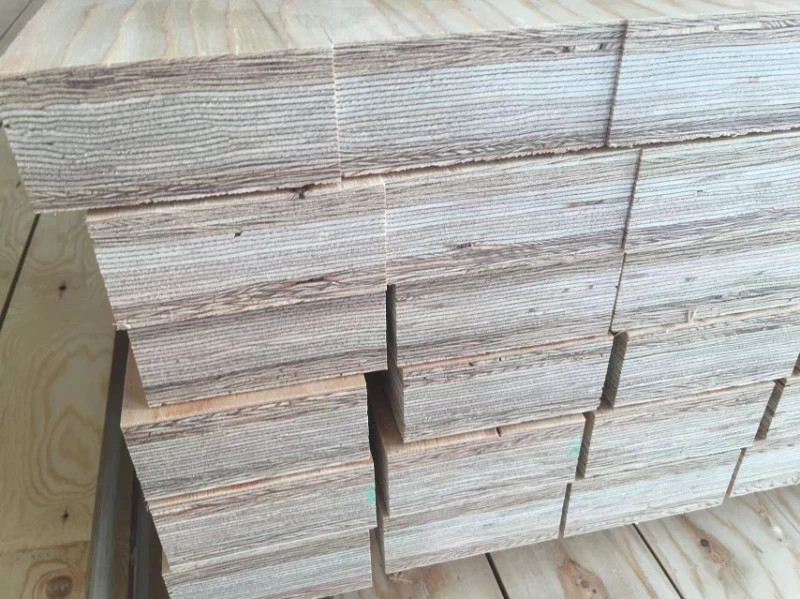This article explores how to finish plywood, specifically focusing on techniques to seal it without significantly darkening the wood or altering its natural color. We'll delve into various methods, products, and considerations, explaining why this is a valuable resource for anyone working with plywood, from hobbyists to professional builders. Many people love the clean, light aesthetic of raw plywood, but want to protect it from moisture, wear, and tear. This guide will equip you with the knowledge to achieve that desired balance.
What Makes Plywood Finishing Different?
Plywood, unlike hardwood, is an engineered wood product. It's made by gluing together thin layers of wood veneer. This construction presents unique challenges for finishing. The exposed edges of plywood are particularly absorbent, and the face veneers can have varying densities and grain patterns. This means that finish can be absorbed unevenly, leading to blotchiness or uneven darkening. Unlike solid lumber, such as Oak Flooring, which may have more consistant absorption.
Furthermore, the glues used in plywood manufacturing can sometimes react with certain finishes, causing discoloration. The rotary cut veneer on many plywoods exposes a lot of end grain, which will absorb finish and darken more than face grain. Understanding these characteristics is crucial for selecting the right finish and application technique.
Why Does Plywood Typically Darken with Finish?
Most finishes, even clear ones, will darken the wood to some degree. This is because the finish itself has a color, even if it's subtle. When it penetrates the wood fibers, it changes the way light reflects off the surface, making the wood color appear deeper or richer. Think of it like wetting a piece of paper – it looks darker when wet, even though the paper itself hasn't changed color. The same principles apply with wood.

Additionally, some finishes, particularly oil-based ones, contain oils that amber or yellow over time. This adds another layer of color change, further darkening the wood. UV rays from sunlight can also cause the wood itself to darken naturally over time, a process that some finishes can accelerate. This effect is more pronounced with some wood species than others, but it's always a factor to consider.
Can I Prevent Plywood from Darkening Entirely?
The short answer is: it's very difficult to completely prevent any change in the color of the wood. Matter what finish you use. However, you can significantly minimize the darkening and preserve the natural color of the plywood by choosing the right products and techniques.
The key is to select a finish that is as clear and non-yellowing as possible, and to apply it in a way that minimizes penetration into the wood fibers. Think of methods to form a protective layer on the wood rather than soaking into it.
What are the Best Finishes for Maintaining Plywood's Natural Look?
Several finishes are known for their ability to seal wood without changing its color dramatically:
-
Water-Based Polyurethane: This is generally considered the best option for minimizing color change. Water-based polyurethane is very clear, dries quickly, and doesn't yellow over time like oil-based versions. It provides excellent protection against scratches and moisture.
-
Clear Acrylic Finish: Similar to water-based polyurethane, acrylic finishes are also very clear and non-yellowing. They are often used in art applications but can also be suitable for plywood.
-
Shellac (Dewaxed): While shellac can slightly amber the wood, using a dewaxed version (often labeled as "clear" or "blonde") minimizes this effect. Shellac dries quickly and provides a hard, durable finish. It's a good option if you want a slightly warmer tone without significant darkening. You might want to consider shellac first, before top coating with poly.
-
Lacquer: Certain types of Lacquer can be used.

It's important to note that even within these categories, there can be variations in clarity and color. Always test the finish on a scrap piece of plywood before applying it to your project. This allows you to see the final result and make adjustments if needed.
How Does Pre-Sealing or Using a Wood Conditioner Help?
Pre-sealing the plywood with a wood conditioner or a very thin coat of dewaxed shellac can significantly reduce blotchiness and uneven darkening. These products partially seal the wood pores, preventing the subsequent finish from penetrating too deeply or unevenly.
A wood conditioner is particularly helpful for plywood with uneven grain or porous areas. It creates a more uniform surface for the finish to adhere to. Applying a thin coat of shellac, thinned with denatured alcohol, serves a similar purpose. This is sometimes called a "wash coat." After the sealer or conditioner dries, lightly sand the surface with fine-grit sandpaper to smooth out any raised grain before applying the final finish.
What Role Does UV Protection Play in Preventing Darkening?
UV radiation from sunlight is a major contributor to wood darkening and fading over time. Some finishes contain UV inhibitors that help to block these harmful rays, slowing down the oxidation process and preserving the natural color of the wood.
If your plywood project will be exposed to direct sunlight, choosing a finish with UV protection is highly recommended. Look for products specifically labeled as having UV absorbers or blockers. Even with UV protection, it's best to minimize direct sun exposure whenever possible. Products such as Formply F17 2400×1200×17mm may be good candidates.
Are Water-Based Finishes Always the Best Choice?
While water-based finishes are generally the best for preserving the natural color of plywood, there are some situations where other options might be considered. Oil-based finishes, for example, can provide a more durable and water-resistant finish, which might be important for high-wear applications like flooring or tabletops. However, they will almost always darken the wood more than water-based alternatives.
If you choose an oil-based finish, look for one that is specifically formulated to be non-yellowing. You can also minimize darkening by applying thin coats and avoiding excessive build-up.
How Do I Apply Finish for the Most Natural Appearance?
The application method can significantly impact the final appearance of the finish. Here are some tips for achieving the most natural look:
-
Proper Sanding: Before applying any finish, sand the plywood surface smooth with progressively finer grits of sandpaper (e.g., 120, 180, 220). This creates a smooth surface for the finish to adhere to and helps to minimize the appearance of scratches.
-
Thin Coats: Apply multiple thin coats of finish rather than one thick coat. This allows each coat to dry properly and reduces the risk of runs, drips, or uneven build-up. Thin coats also minimize the amount of finish that penetrates the wood, helping to preserve the natural color.
-
Wipe-On Application: For water-based polyurethane or shellac, consider using a wipe-on application. This involves applying the finish with a clean, lint-free cloth, wiping off any excess. This technique provides excellent control and helps to create a thin, even coat.
-
Spraying: Spraying is another option for applying a thin, even coat. However, it requires specialized equipment and proper ventilation.
-
Scuff Sanding: Between coats, lightly sand the surface with very fine-grit sandpaper (e.g., 320 or 400) or a fine abrasive pad. This removes any dust nibs or imperfections and creates a smooth surface for the next coat.
-
Avoid Over-Brushing/Over-Wiping: When applying finish, avoid excessive brushing or wiping, which can create streaks or unevenness.
What About Alternatives Like Wax or Oil?
While wax and oil can enhance the natural beauty of wood, they are generally not recommended as the sole finish for plywood. They offer minimal protection against moisture and scratches, and they tend to darken the wood more than water-based options. However products like beeswax can be useful.
Wax can be used as a top coat over a harder finish like polyurethane or shellac to add a soft sheen and a bit of extra protection. Some natural oils, like tung oil or linseed oil, can be used, but they will significantly darken and amber the wood over time. If you want to keep your plywood as light as possible, I’d say these are best avoided.

Can I Dye Plywood and Still Achieve a Natural Look?
Dye offers a unique way to color wood without obscuring the grain. Unlike wood stain, which contains pigments that sit on top of the wood, dye penetrates the wood fibers, coloring them from within. This allows you to alter the hue of the wood while still maintaining its natural texture and wood grain.
If you want to slightly adjust the color of your plywood without significantly darkening it, you can use dyes. Water-based dyes are generally the best choice for minimizing color change. You can mix them with distilled water to create very light, subtle tints. Always test the dye on a scrap piece of plywood to ensure you achieve the desired effect. After the dye dries, you'll still need to apply a clear topcoat to protect the wood. 12mm plywood is a good option for this.
How to tackle with structural and non-structural Plywood?
Finishing structural and non-structural plywood requires slightly different approaches, though the principles of minimizing darkening remain the same.
Structural Plywood: Structural plywood, often used in construction for sheathing, subfloors, and roof decking, prioritizes strength and durability. While aesthetics are less critical, you might still want to seal it to protect against moisture and decay. Water-based polyurethane, potentially with added UV inhibitors if exposed to sunlight, is a good option. Focus on ensuring complete coverage, especially on edges, to prevent water intrusion.
Non-Structural Plywood: Non-structural plywood, used for furniture, cabinetry, and decorative applications, places a higher premium on appearance. Here, preserving the natural color and minimizing darkening is crucial. Water-based finishes, pre-sealing, and careful application techniques become even more important. You might consider using a higher-quality plywood with a more attractive veneer.
Consider the item's intended purpose. A cutting board for instance, necessitates food-safe finishes. A piece of furniture, however, may benefit from higher gloss or decorative elements, which might mean a greater shade or two of darkening is acceptable.

Summary: Key Takeaways for Sealing Plywood Without Darkening
- Plywood is different from solid wood and requires specific finishing techniques.
- Most finishes will darken wood to some degree, but you can minimize this.
- Water-based polyurethane is often the best choice for preserving natural color.
- Pre-sealing or using a wood conditioner can help prevent uneven absorption.
- UV protection is important for projects exposed to sunlight.
- Apply thin coats of finish and sand between coats.
- Dyes can subtly alter the color without obscuring the grain.
- Consider the structural vs. non-structural purpose of the plywood.
- Always test finishes on scrap plywood first.
- For structural plywood, consider using structural ply.
By following these guidelines, you can confidently seal your plywood projects while preserving their natural beauty and light aesthetic. Remember, patience and careful application are key to achieving a professional-looking finish. Good luck, from Allen, in China, supporting your building needs!
Post time: Mar-20-2025




